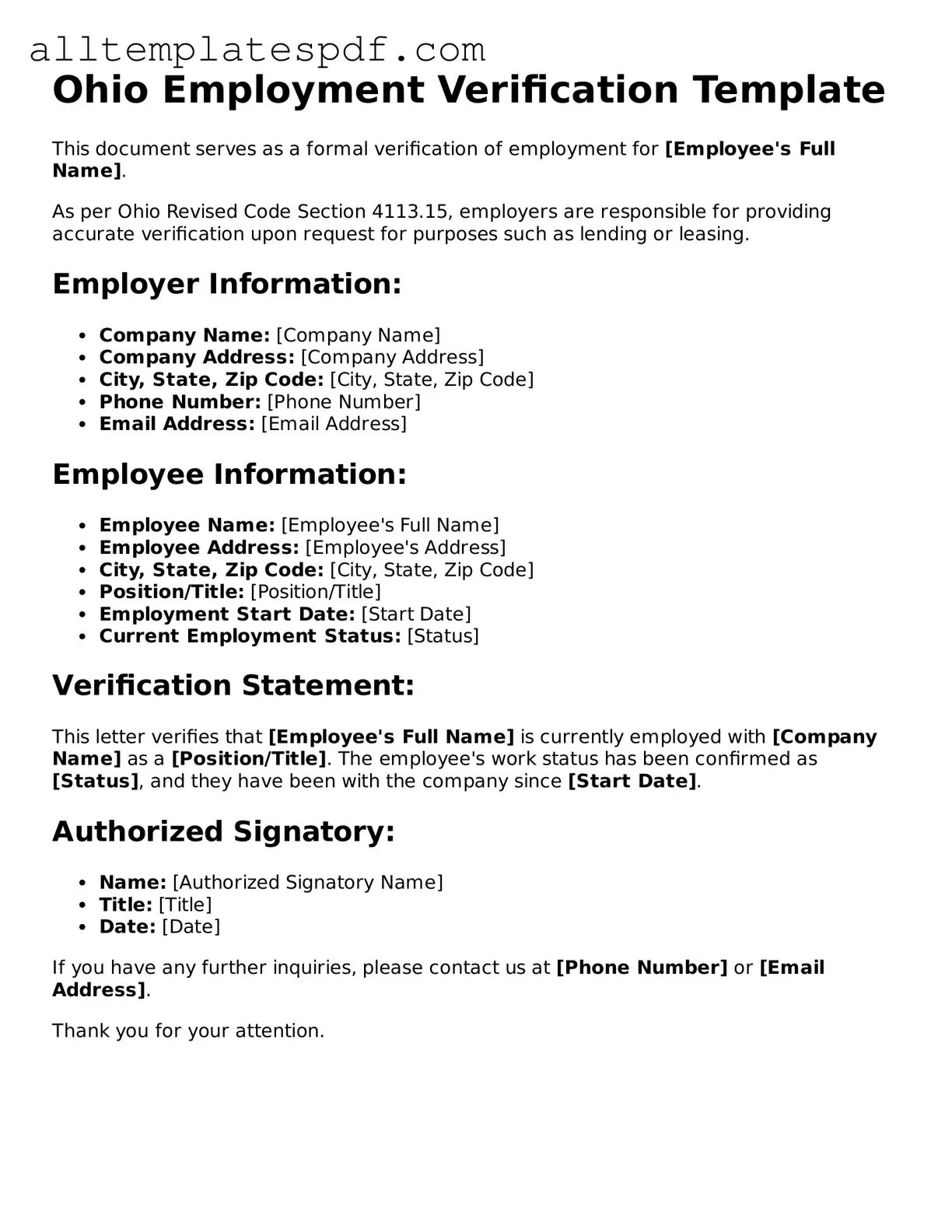Instructions on Utilizing Ohio Employment Verification
After obtaining the Ohio Employment Verification form, you will need to complete it accurately. This process involves providing specific details about your employment status. Follow the steps outlined below to ensure that the form is filled out correctly.
- Begin with your personal information. Fill in your full name, address, and contact number at the top of the form.
- Enter your Social Security Number. This is crucial for identification purposes.
- Provide your employer's name and address. Make sure to include the complete company name and location.
- Indicate your job title and the date you started working for the employer.
- Specify your current employment status. Check the appropriate box for full-time, part-time, or temporary employment.
- List your work hours, including the number of hours you work per week.
- Complete any additional sections as required, such as salary information or benefits.
- Review the form for accuracy. Ensure all information is correct and up-to-date.
- Sign and date the form at the bottom. Your signature confirms the information is true to the best of your knowledge.
Once you have completed the form, submit it according to the instructions provided by your employer or the requesting agency. Ensure you keep a copy for your records.
